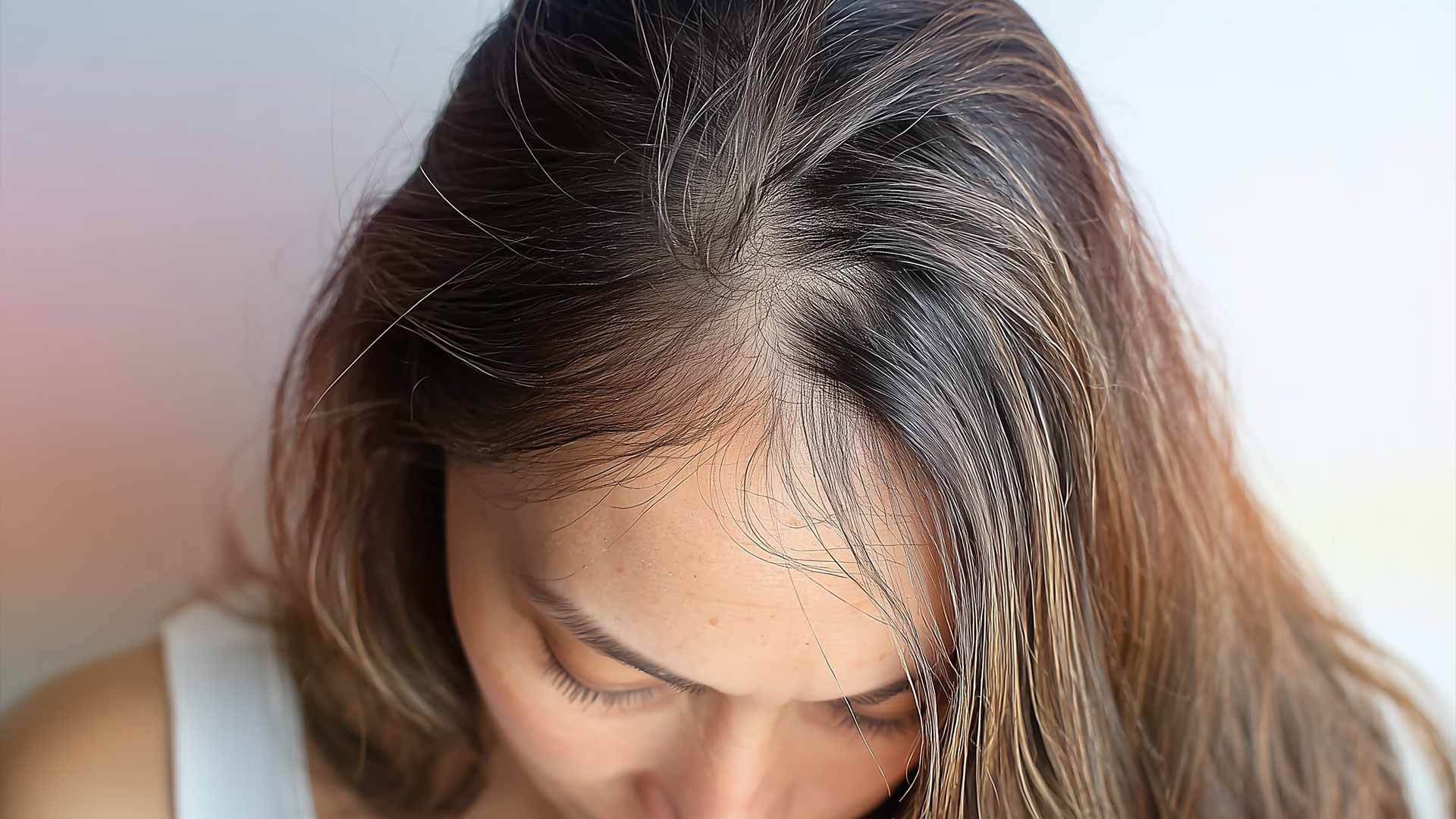Hair extensions can absolutely transform thin hair from feeling sparse and lifeless to full of volume and confidence—but here's the thing that keeps me up at night: thin hair faces 3-4 times higher risk of permanent damage compared to normal hair density if you don't know what you're doing.
After working with hundreds of clients with fine and thin hair since 2017, I've seen both incredible transformations and heartbreaking damage that could've been completely prevented. This guide reveals exactly how to safely achieve beautiful results while protecting your natural hair's long-term health.
Key Takeaways

Understanding Why Thin Hair is More Vulnerable
Look, I'm gonna be straight with you—thin hair is just different, and pretending it's not is how people end up with permanent damage. When I say thin hair is more vulnerable, here's what I mean specifically:
Fine hair strands have smaller diameters and way lower tensile strength than normal hair. It's like the difference between dental floss and embroidery thread—both can break, but one's gonna give way a lot faster! Plus, when you have sparse hair density, those fewer follicles have to bear more weight per attachment point. The follicles themselves are often less robust too, with weaker anchoring systems that can't handle the same stress.
Then there's the sebum production issue—thin hair typically produces less natural oil, making it more prone to dryness and brittleness. All of this adds up to hair that needs a completely different approach than what you'd use on thick, coarse hair.
I had this one client who came to me after a bad extension experience at another salon. They'd put in heavy wefts without considering her hair type, and she developed what's called traction alopecia—permanent hair loss from constant pulling. The scariest part? It happened in just six weeks. That's why I'm so passionate about education and proper technique!
Recognizing the Warning Signs Early
Knowing the warning signs can literally save your hair. Some scalp tenderness for the first 2-3 days after getting extensions? That's normal. But if you're experiencing scalp tenderness beyond that adjustment period, increased shedding above 100-150 hairs daily, or visible thinning especially around the hairline—we need to talk about removal, stat.

The "fringe sign" is something I always watch for—it's when you start seeing fine, wispy hairs remaining at the hairline edges while longer hairs get pulled out. If you see severe scalp pain, open sores, rapid hair loss, or any signs of infection, those extensions need to come out immediately, no questions asked.
Best Extension Methods for Your Delicate Hair
Tape-in extensions are hands-down my go-to recommendation for most thin hair clients. Here's why I love them: they're incredibly lightweight at only 2-4 grams per section, and that wide attachment area distributes weight so evenly across your scalp. For super fine hair, I actually recommend single-sided tapes which cut the weight in half while still giving you security.
The application takes about an hour to an hour and a half in my chair, maintenance is every 6-8 weeks, and the hair can be reused 2-3 times if you take care of it properly. I've been working with HairTalk extensions for years, and their petite tape-ins are literally perfect for smaller heads and finer hair textures.
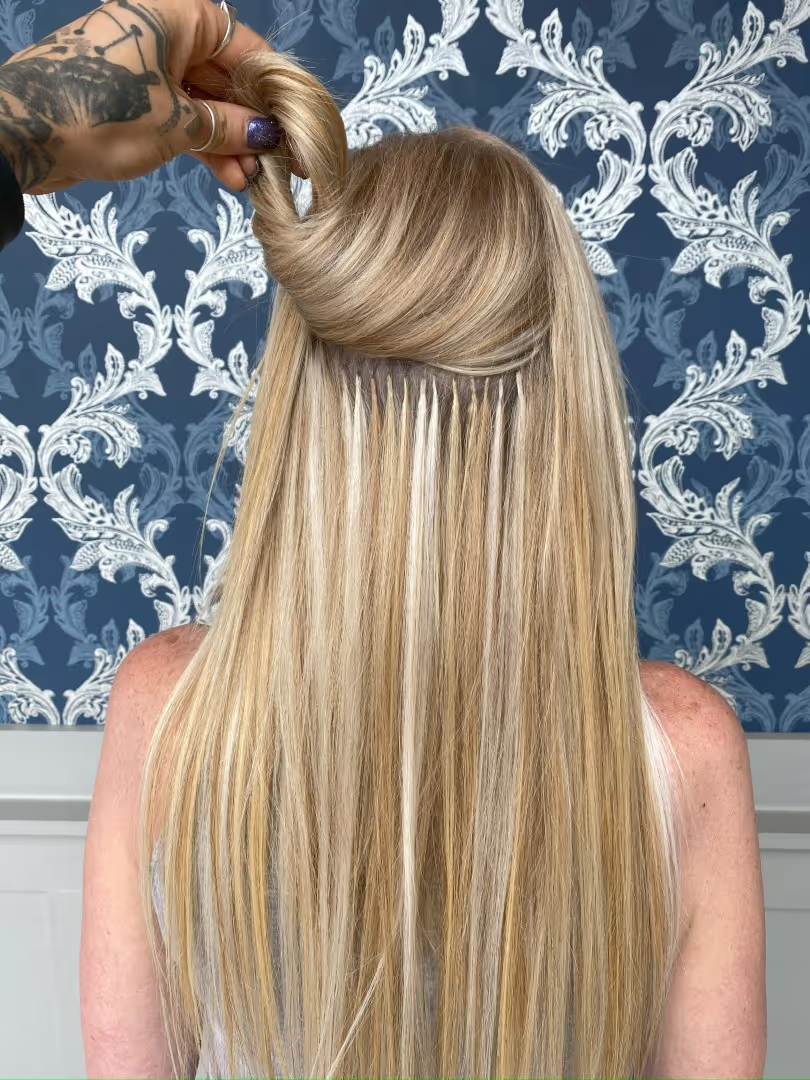
K-tip fusion extensions using cold fusion methods are my second choice, especially for clients with really sparse hair who need seamless coverage. I work with Great Lengths ultrasonic cold fusion system—it creates these tiny, flat bonds without any heat damage, and each bond is only 0.5-0.7 grams.
Now, I'll be honest—the application is time-intensive at 4-8 hours depending on how much coverage you need. But the results can last 3-6 months, and when you have very little natural hair to work with, sometimes this seamless coverage is exactly what you need to feel confident again.
Hand-tied wefts can be amazing if you have enough length to start with—at least 4 inches of your own hair. They weigh about 14 grams per weft, but that weight gets distributed across the entire beaded track system. These ultra-lightweight extensions lie super flat and can be customized with color blending. The best part? They can last up to a year with proper care and 6-8 week maintenance.
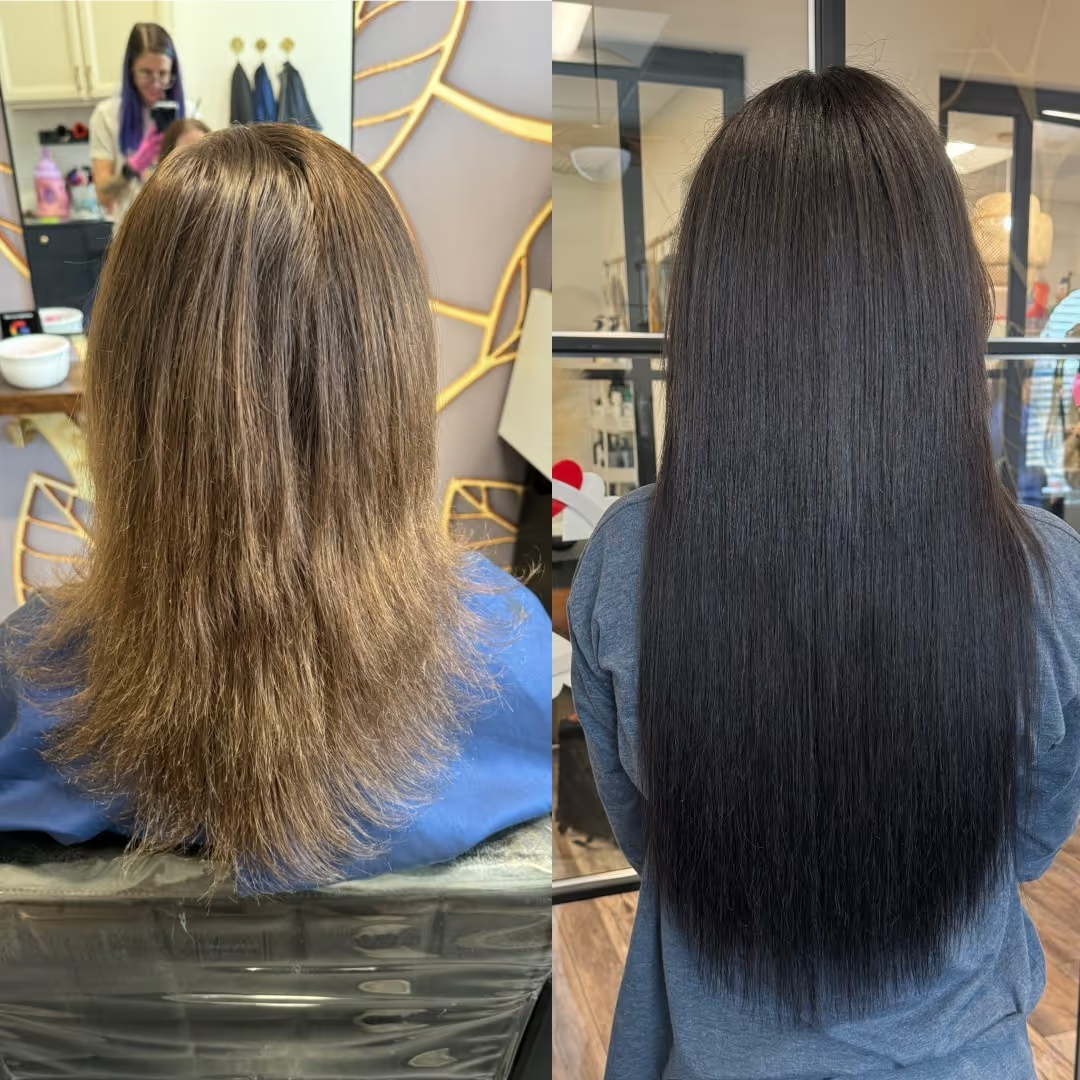
Clip-in extensions are the safest option for trying out extensions, but honestly, they get only a "fair" rating for very thin hair because of weight and visibility issues. Quality human hair clip-ins work best for special occasions rather than daily wear. If you go this route, make sure you get ones with silicone-lined clips and consider having additional clips sewn on for better weight distribution.
Methods to Absolutely Avoid
Please, please don't let anyone talk you into micro-links if you have thin hair. The slippage risk is just too high, and they're nearly impossible to secure properly on fine hair. Sew-in weaves are also a no-go because they require tight braiding that can cause traction alopecia. Traditional heavy wefts and any fusion methods using hot application tools? Skip 'em—the risk just isn't worth it.
Professional Application Techniques That Actually Protect Your Hair
The foundation of any safe extension application starts with a proper consultation. I spend 15-30 minutes with every client assessing their scalp health, hair texture and density, natural growth patterns, and honestly evaluating whether their hair can support extension weight. I document everything with photos and make sure they understand the risks before we proceed.

Strategic sectioning for delicate hair means creating smaller, more precise horizontal sections to distribute weight effectively. I position extensions 1/8" to 1/4" away from the scalp to allow for flexibility and movement. The crown area? That's off-limits for most thin hair clients—it's just too delicate. Same goes for face-framing areas around the hairline and temples.
Here's my rule for weight: no more than 2-3 ounces total extension weight for thin hair clients. That means using 50-70% less hair than I'd typically use on someone with normal density. I always start with minimal extensions and only add more if the hair tolerates it well. Quality over quantity, always!
One thing that drives me absolutely crazy is when I see stylists who don't have proper certification trying to work on thin hair. This is specialized work that requires specific training. During application, if a client reports any discomfort, we stop and adjust immediately. Comfort isn't negotiable—it's a safety indicator.
Maintenance That Actually Matters
Thin hair needs more frequent professional maintenance than normal hair—every 6-8 weeks maximum instead of the standard 10-12 weeks. For very fine hair, I sometimes see clients every 6 weeks to prevent complications from overgrowth.
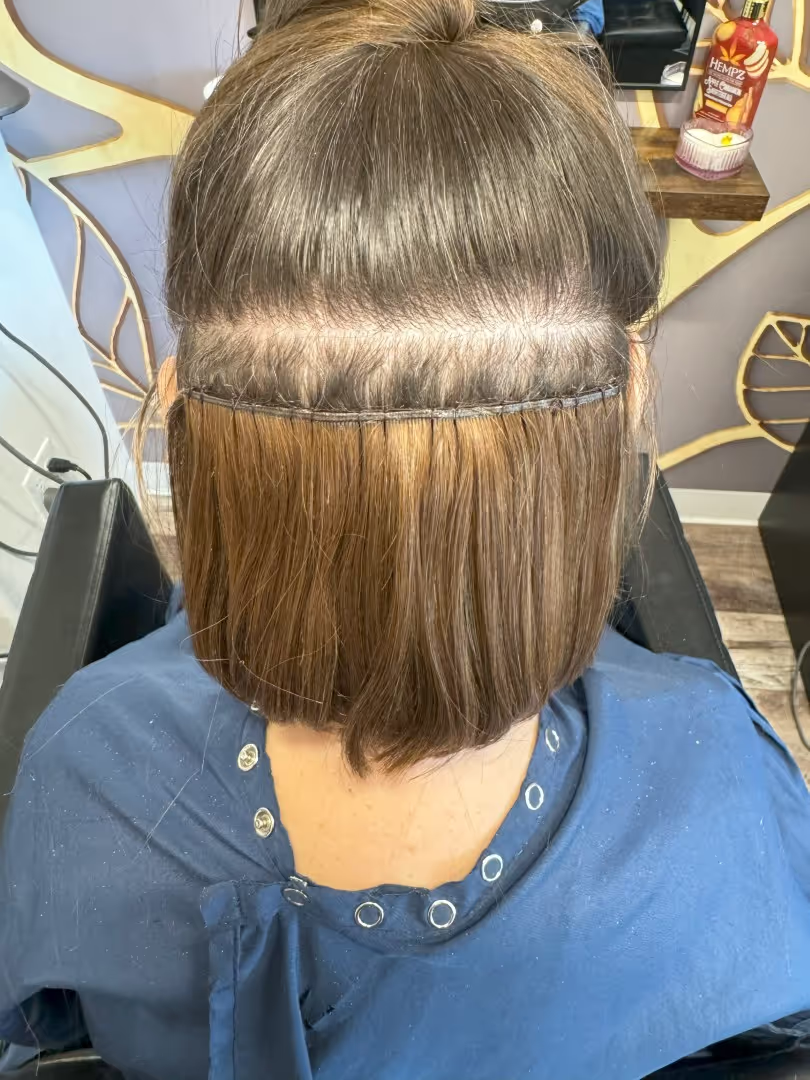
Each maintenance appointment includes gentle removal, assessment of your natural hair, professional clarifying treatment, and careful reapplication following the original placement map. We don't just slap things back in—every placement is intentional and documented.
For home care, you need to be gentle. Brush twice daily with a wide-tooth comb or extension brush, starting from the ends and working up while holding the attachment points. Sleep protection is crucial—loose braiding or silk pillowcases reduce friction.
Weekly washing should be limited to 1-2 times max using sulfate-free, paraben-free products. Focus shampoo on your scalp and roots only, and do deep conditioning treatments from mid-shaft to ends weekly. Avoid oil-based products that can loosen tape, and stay away from salt water and chlorine.
Realistic Expectations and Results
Let me set realistic expectations here. Extensions can add 50-80% more volume appearance when properly applied to thin hair, but they can't create the dramatic thickness you might see on someone with normal density hair. Length addition is usually limited to 4-6 inches maximum rather than the 10+ inches possible with stronger hair types.
The coverage improvements are real though! Extensions help camouflage thinning areas and create a fuller appearance that enables hairstyles you probably thought were impossible with your natural hair. The confidence boost? That's priceless, and I see it in my clients every single day.
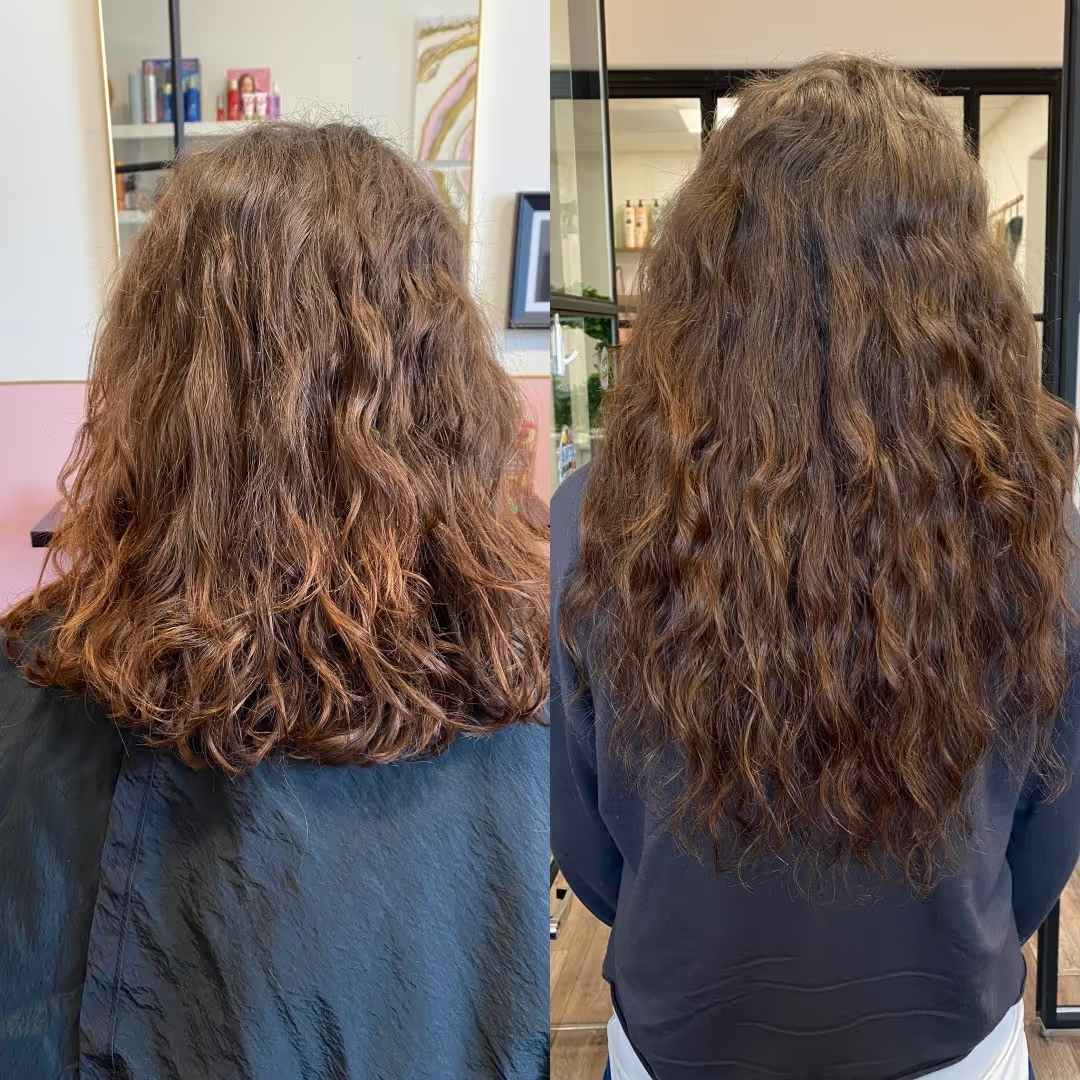
But here's what extensions can't do: they can't fix underlying hair loss conditions or stop genetic thinning processes. They require consistent maintenance to avoid looking obvious, and they do have limited lifespans requiring replacement. All methods involve some damage risk, and thin hair faces higher vulnerability than normal hair types.
Lifestyle impacts are real too. You'll need to modify exercise routines with protective styles and immediate post-workout washing. Sleep adjustments with silk pillowcases and loose braids become necessary. Swimming requires chlorine protection, and travel gets more complicated when you need specialized products and access to qualified maintenance.
What It Really Costs (The Full Picture)
Initial investment varies dramatically by method. Clip-ins run $100-500 for quality human hair, while fusion extensions can be $950-1,900 including professional installation. But the ongoing maintenance is where the real costs add up—annual expenses can range from $600-2,500 depending on your method choice.
Hidden costs include specialized hair care products at $30-60 monthly, professional removal fees of $50-200, hair treatments and masks at $20-40 monthly, professional trimming for blending at $50-100 per visit, and replacement costs for damaged extensions at 20-30% of original investment annually.
Over two years, you're looking at $3,000-6,000 for semi-permanent methods. It's a significant beauty investment that requires careful financial planning. But here's what I tell my clients: quality is cost-effective long-term. Premium extensions and professional installation prevent damage that leads to expensive correction procedures.
How Long Different Methods Actually Last on Thin Hair
Method lifespans on thin hair are often shorter than what manufacturers claim because of the delicate nature of fine hair. Clip-ins offer the longest overall lifespan at 6 months to 3 years depending on usage frequency, with minimal hair damage being their primary advantage.
Tape-ins last 6-8 weeks per application with 2-3 reuses possible. I'll be honest—about 15-20% of my clients experience some slippage issues requiring earlier replacement, but the even weight distribution across wider areas still makes this method particularly suitable for thin hair.
Fusion extensions provide 3-4 months wear with high durability, but you need new hair for each application due to the removal process. The investment proves worthwhile for clients requiring seamless coverage of very sparse areas.
Hand-tied wefts offer 8-12 weeks between move-ups with hair lasting up to one year when properly maintained. The higher initial investment balances against extended usability for clients who can accommodate the weight requirements.
Professional vs DIY: Why This Decision Matters So Much
Professional application becomes absolutely essential for all semi-permanent methods on thin hair. We have the damage prevention knowledge, proper assessment capabilities, color matching expertise, and technique knowledge that extends lifespan. Plus, professional liability insurance provides additional protection for high-risk thin hair applications.
DIY application should only be attempted with clip-in and halo extensions. Even then, you need quality human hair and should watch multiple tutorials before attempting application. Be realistic about blending limitations and budget for professional correction if needed.
Professional application costs 2-3 times more than DIY, but it prevents damage that often costs more than professional services to correct. When choosing a professional, look for certified specialists with demonstrated thin hair experience rather than general stylists.
The false economy of DIY semi-permanent methods often results in expensive damage requiring professional correction, hair replacement, and potentially medical treatment for severe cases. For thin hair clients, the investment in proper professional application proves cost-effective every time.
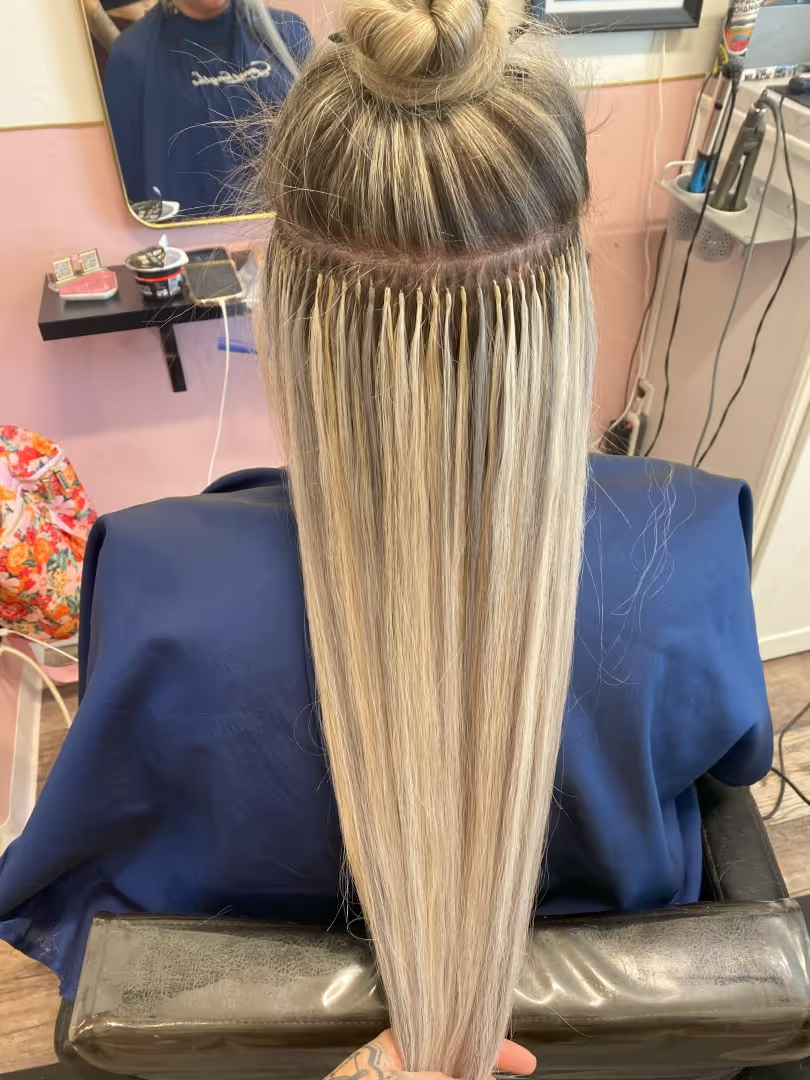
Making the Right Decision for Your Hair
Success with hair extensions on thin hair requires balancing aesthetic goals with hair health preservation through informed decision-making and professional guidance. I always recommend starting with conservative temporary methods to test compatibility before committing to semi-permanent options that carry higher risks.
The decision framework I use with my clients starts with professional consultation to assess candidacy, followed by realistic goal setting within your hair's limitations, method selection based on lifestyle and budget factors, and commitment to proper maintenance requirements.
Remember, extensions should enhance rather than compromise your natural hair's long-term health. With proper planning, realistic expectations, and professional expertise, thin hair clients can achieve beautiful, confidence-boosting results while preserving their natural hair for years to come.
Frequently Asked Questions
**How much weight can thin hair safely support with extensions?**
Ultra-fine hair can safely support maximum 1-2 ounces total weight, while fine hair with normal density may accommodate 2-3 ounces. These limits prevent follicle stress that leads to permanent damage like traction alopecia.
**What are the warning signs that extensions are damaging my thin hair?**
Watch for scalp tenderness beyond 2-3 days, increased shedding above 100-150 hairs daily, visible thinning especially around hairline, the "fringe sign" (wispy hairs at hairline edges), severe scalp pain, or any signs of infection requiring immediate removal.
**Can extensions help with thinning hair from medical conditions?**
Extensions can camouflage thinning areas and boost confidence, but they cannot fix underlying hair loss conditions or stop genetic thinning processes. Medical clearance is required for conditions like hormonal imbalances, autoimmune disorders, or recent chemotherapy.
**How often should thin hair extensions be professionally maintained?**
Thin hair requires maintenance every 6-8 weeks maximum, compared to 10-12 weeks for normal hair. Very fine hair may need attention every 6 weeks to prevent complications from overgrowth and ensure continued hair health.
**Which extension brands work best for thin and fine hair?**
Great Lengths ultrasonic cold fusion, HairTalk petite tape-ins, and quality hand-tied wefts work best for thin hair due to their lightweight construction and gentle application methods that minimize stress on delicate follicles.
**What's the safest way to remove extensions from thin hair?**
Professional removal is essential for all semi-permanent methods. DIY removal often causes significant damage through improper technique. Professional removal includes gentle techniques, proper solvents for adhesives, and immediate hair assessment for any damage.
Ready for Your Perfect Extensions?
Remember, everyone's thin hair journey is unique! What works for one person might need tweaking for another, and that's completely normal. The key is finding a professional who really understands the special considerations that come with delicate hair.
Want personalized extension advice for your specific hair type and goals? Stop by Jo Hearts Hair in Lone Tree, and let's create your perfect volume and length transformation together—safely and beautifully!
Located at: 9227 East Lincoln Ave, Suite #111, Lone Tree, CO 80124
Follow @joheartshair for daily inspiration and behind-the-scenes peeks at stunning transformations! ✨
Here's to gorgeous, healthy hair that makes you feel unstoppable!
XOXO,
Jo 💕

